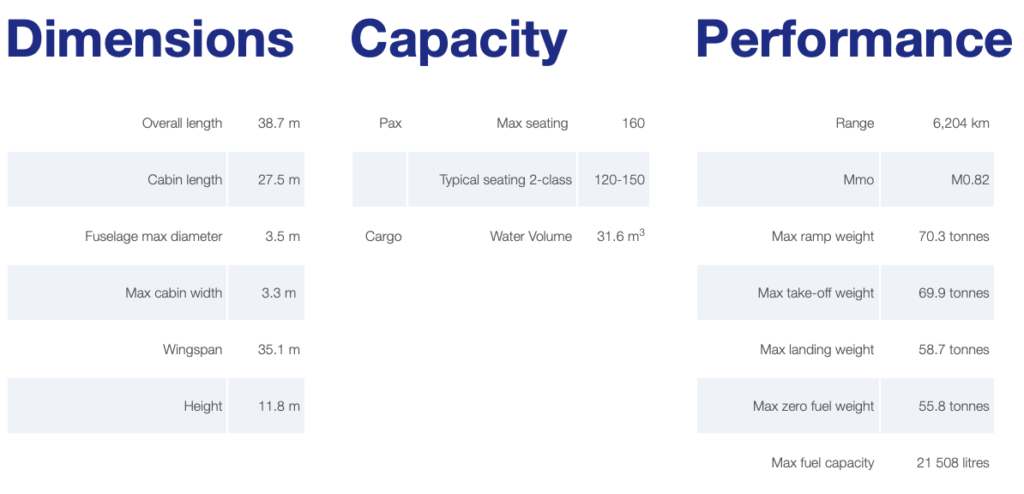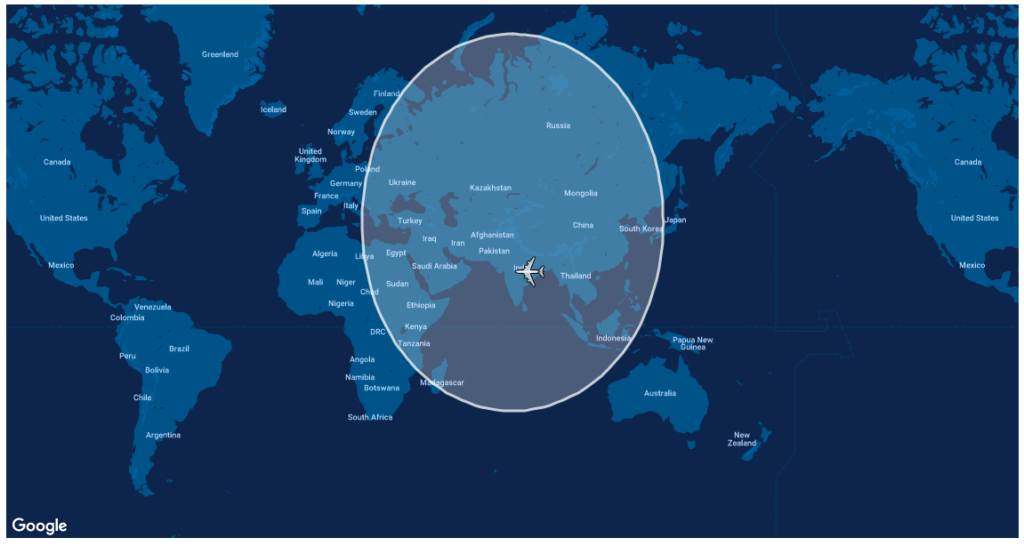Detailed Look Inside A-220 – The Game Changer Aircraft
The newest member A-220 Aircraft of Airbus family is a complete game changer aircraft.

This will revolutionize the aviation travel. The Airbus A220, previously known as Bombardier CSeries (or C Series), is a family of narrow-body, twin-engine, medium-range jet airlinersoriginally designed and built by the Canadian manufacturer Bombardier Aerospace, now marketed by Airbus and built by joint venture Airbus Canada Limited Partnership.

The 108 to 133-seat CS100 (now A220-100) made its maiden flight on 16 September 2013, was awarded an initial type certification by Transport Canada on 18 December 2015, and entered service on 15 July 2016 with Swiss Global Air Lines. The 130 to 160-seat CS300 (now A220-300) first flew on 27 February 2015, received an initial type certification on 11 July 2016, and entered service with launch customer airBaltic on 14 December 2016. Early operators recorded better-than-expected fuel burn and dispatch reliability, as well as positive feedback from passengers and crew.
Airbus acquired a 50.01% majority stake in the CSeries program in October 2017, with the deal closing in July 2018. As part of the deal, Bombardier retained a 31% stake in the aircraft and Investissement Québec 19%. In August 2019, Airbus opened a second assembly line for the aircraft at its Mobile, Alabama factory.
Lean, economical and efficient-A 220
The larger member of the A220 Family – the A220-300 – was specifically designed and purpose-built for the 120-160 seat market. It represents the fusion of performance and technology, allowing airlines to connect distant points on continents or sectors that were previously unprofitable or impossible.
The A220-300’s advanced aerodynamics combined with specifically-designed Pratt & Whitney PurePower PW1500G geared turbofan engines contribute to an aircraft that delivers 20% lower fuel burn per seat than previous generation aircraft, half the noise footprint, and decreased emissions, making it a true community-minded jetliner.
Both members of the A220 Family share commonality in more than 99% of the line-replaceable units (LRUs), as well as the same family of engines – meaning operators can fly both versions and at a significant cost savings. Flight crews with the same pilot type rating, as well as cabin personnel, will enjoy a seamless transition between the A220-300 and A220-100, greatly reducing complexity and training costs.
A flexible and comfortable cabin

In addition to delivering best-in-class economics, the A220 Family’s cabin was purpose-built to deliver an excellent passenger experience. A220 Family aircraft are recognised for their low noise levels, providing a quiet, comfortable cabin.
Wide seats combined with ample overhead storage create personal space without compromising on headroom, and the cabin management system provides crews with easy, intuitive control of the aircraft’s interior environment, including entertainment offerings and mood lighting to ensure a delightful passenger experience.
Like the A220-100 version, the A220-300’s configurable cabin provides two flex zones, allowing operators to benefit from fully customisable modular cabin elements, including stowage areas and partitions, based on their specific needs.
Range of Aircraft A-220

Orders of Airbus
October was a landmark month for Airbus in terms of new business, with orders logged for 415 new commercial jetliners. This includes one of the company’s largest-ever transactions with a single airline operator, and overall bookings that significantly strengthened the extra-long-range A321XLR’s market positioning – while the 77 deliveries brought the total number of A320neo/A321neo jetliners delivered to customers/operators above the 1,000 mark.

Leading October orders was Indian carrier IndiGo’s for 300 additional A320neo Family aircraft, taking its overall order for the type to 730.
Other bookings in October for the increasingly-popular A321XLR included 30 for Malaysia’s AirAsia X, 20 for Hungarian-based Wizz Air, 12 for JetSMART of Chile, and two for an unidentified customer. Another unidentified customer ordered 13 A321XLRs in a transaction that also included 12 A330-900 highly efficient wide-bodies.
Completing the A320 Family orders during the month was China Airlines’ contract for 11 A321neos; seven A320neos for Taiwan’s Tigerair; and an agreement by the U.S. based lessor Aviation Capital Group for three A320neos. Overall, the A320neo Family reached a new milestone of over 7,000 orders from 113 customers with a backlog of more than 6,000. A-220 may face lot of problems as well.
New transactions were also booked in October for the latest member of Airbus’ single-aisle product line: the A220. France’s Réunion Island-based airline, Air Austral, signed a firm order for three A220s, becoming the first A220 customer in the Indian Ocean region; while Air Tanzania, the A220’s initial African-based operator, extended its fleet of A220-300s with two additional aircraft.
Problems with A-220
- Due to small capacity,most of the airlines are facing slot issues. Now a days, all the airlines want to
The 77 deliveries during the month were made to 45 customers and led by the A320 Family with 59 deliveries (56 NEOs and three CEOs). Since the A320neo Family entry into service in 2016, October marked Airbus’ 1,000th A320neo Family delivery, an aircraft which was received by IndiGo.
Among the other notable deliveries in October were the first A321neo for Taiwan’s STARLUX Airlines (through lessor GECAS).
Completing the October deliveries were four A220s, along with 14 Airbus wide-body aircraft: eight A350-900s and six A330s (four NEOs and two CEOs).
During the first 10 months of 2019, Airbus made 648 deliveries overall to 92 customers, compared with 584 aircraft over the same period of 2018 – equivalent to 64 more deliveries.
Taking the latest orders and deliveries into account, Airbus’ aircraft backlog as of 31 October stood at 7,471 aircraft including 6,107 A320 Family, 436 A220 Family, 593 A350 XWBs, 284 A330s and 51 A380s.




Good information keep it up respect your love to aircraft and aviation.
Thank you Sir.